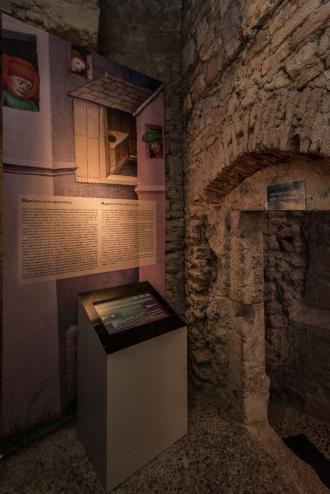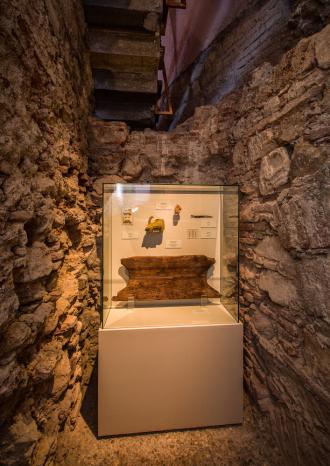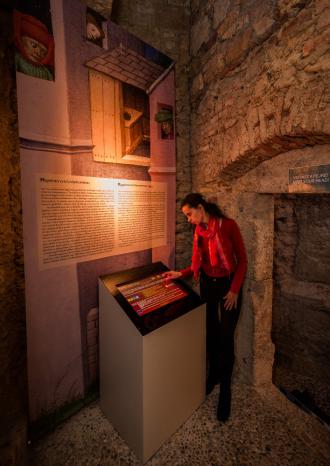Hogyan készül - lépésről lépésre
1st Step:
Choose object and topic
We would have liked if visitors kind of “bump into” at least one of the five installation on one of the floors of the museum (the museum has four floors in total).
The new entrance of the museum in the so called King’s cellar leads the walking tourists and visitors from the reconstructed mediaeval garden into the museum. With the popular topic of former lavatory (which is also a question of today, because visitors would like to find it soon after entrancing the museum) we tried to catch the interest at the beginning, if they visit the museum from this direction.
The reconstruction of the medieval lavatory is an outstanding location to think about the habits of the people of the former royal palace.
2nd Step:
Check technical preconditions
The mediaeval part of the palace was reconstructed in the 1960s and until this last restoration there have not happened any important renewal, so we needed to have all modern electronically conditions to be able to use the installation with the touch screen.
3rd Step:
Cost estimates
The equipment had the price we needed but the programming needs more planning and practice for a detailed estimation of the costs.
4th Step:
Create content
To define the content we consulted the curators of the exhibitions and the refurbishment of that part of the museum was a happy coincidence. We kept in mind the exhibition objects of this part of the museum and also consulted historians on the history of hygiene.
5th Step:
Last corrections
The content had to be controlled also according to the behaviour of the visitors. We planned to lead them until the situation of today, so we needed to consider also the duration of the browsing at the touch screen.
6th Step:
Implementation
The design of the installation matches with the used boxes and touch screen systems of the museum. The implementation happened parallel with the renewal of the space.





















